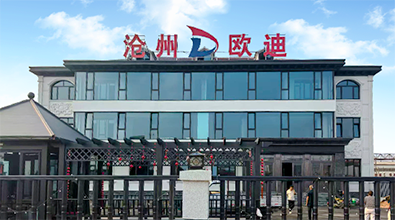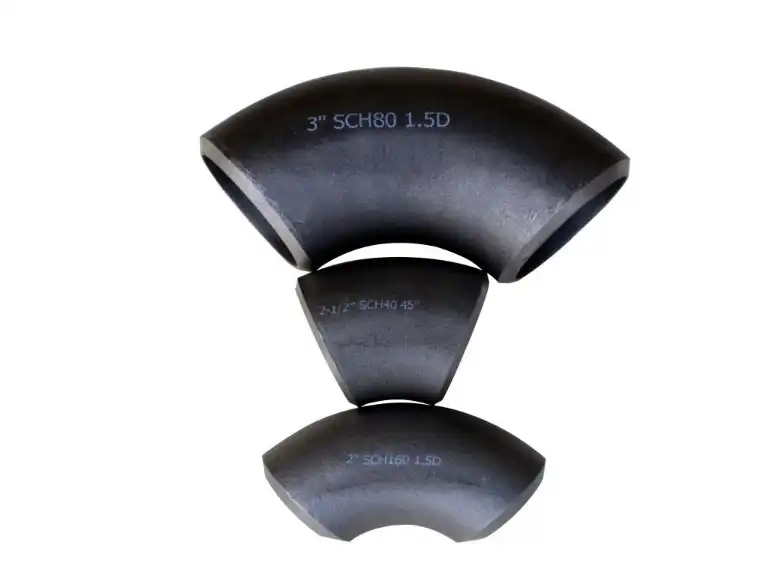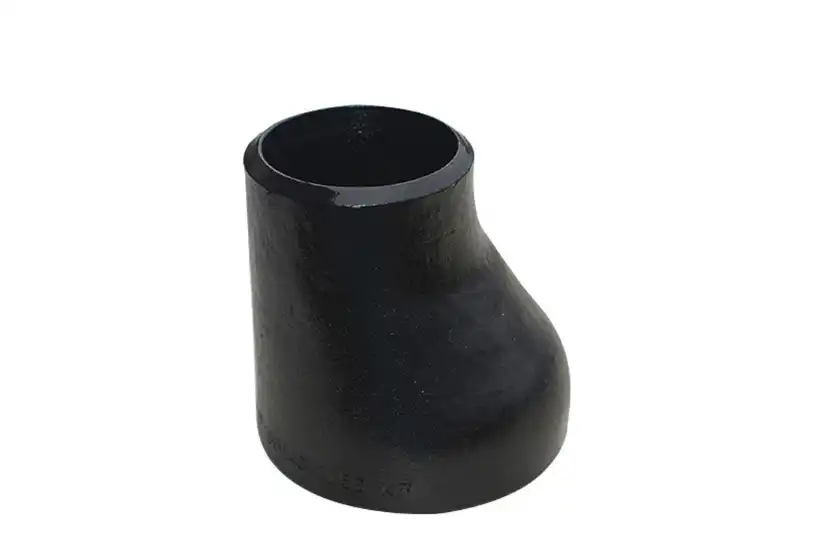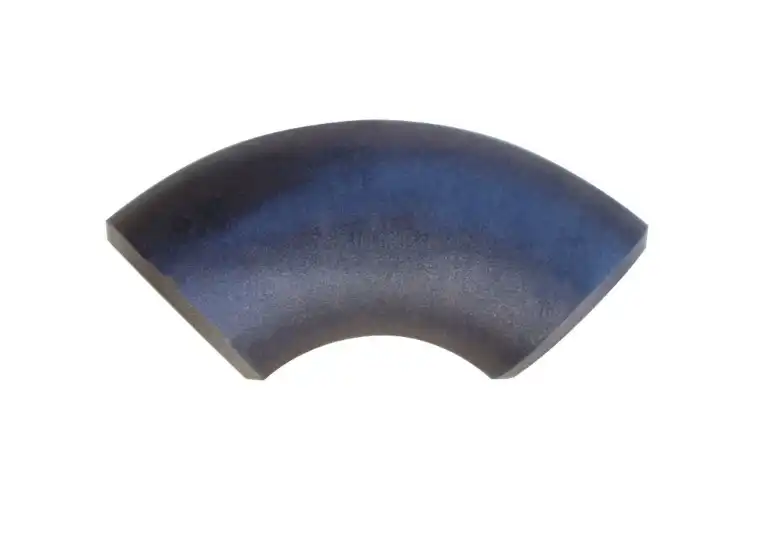How Short Radius Elbows Revolutionize Compact Piping Solutions?
In the ever-evolving world of industrial piping systems, innovative solutions are constantly sought to optimize space utilization, improve efficiency, and reduce costs. One such groundbreaking development that has transformed the landscape of compact piping solutions is the short radius elbow. These ingenious components have revolutionized the way engineers and designers approach piping layouts, offering a myriad of benefits that traditional long radius elbows simply cannot match. Short radius elbows, with their tighter bend radius and compact design, have become indispensable in industries where space is at a premium and intricate piping configurations are necessary. By allowing for sharper turns and more efficient use of limited space, these elbows have opened up new possibilities in plant design, process optimization, and overall system performance. In this blog, we will explore the various ways in which short radius elbows have reshaped the world of compact piping solutions, delving into their advantages, applications, and the impact they have had on modern industrial processes.
Enhanced Space Utilization
Compact Design for Tight Spaces
Short radius elbows have revolutionized compact piping solutions by offering a remarkable improvement in space utilization. These innovative components are specifically designed to provide a tighter bend radius compared to their long radius counterparts, allowing for more efficient use of limited space in industrial environments. The compact nature of short radius elbows enables engineers to create intricate piping layouts that were previously impossible or impractical with traditional elbow designs. By reducing the overall footprint of piping systems, short radius elbows facilitate the installation of more equipment and components within the same area, maximizing the use of available space. This is particularly crucial in industries where real estate is at a premium, such as offshore platforms, chemical plants, and crowded urban environments. The ability to optimize space utilization not only improves operational efficiency but also contributes to cost savings by reducing the need for larger facilities or extensive modifications to existing structures.

Flexibility in Piping Layout Design
Short radius elbows offer unparalleled flexibility in piping layout design, allowing engineers to create more complex and efficient systems. The compact nature of these elbows enables the implementation of tighter bends and more intricate routing options, which is especially beneficial in confined spaces or areas with multiple obstacles. This flexibility in design opens up new possibilities for optimizing flow paths, reducing pressure drops, and improving overall system performance. Short radius elbows can be strategically placed to navigate around existing structures, equipment, or other piping, eliminating the need for costly and time-consuming modifications to the surrounding environment. This adaptability not only simplifies the installation process but also allows for more creative and efficient piping solutions that can address specific project requirements and constraints. The increased design flexibility provided by short radius elbows ultimately leads to more streamlined and cost-effective piping systems across various industries.
Reduced Overall System Footprint
One of the most significant advantages of short radius elbows in compact piping solutions is their ability to dramatically reduce the overall system footprint. By utilizing these space-saving components, engineers can design piping systems that occupy less physical space while maintaining the necessary flow characteristics and performance requirements. The reduced footprint achieved through the use of short radius elbows has far-reaching implications for industrial facilities. It allows for the installation of additional equipment or the expansion of existing systems within the same area, maximizing the utilization of available space. This is particularly beneficial in retrofit projects or in facilities where space is at a premium. Furthermore, the compact nature of short radius elbows can lead to reduced material costs, as less piping is required to achieve the same routing objectives. The smaller system footprint also translates to lower installation and maintenance costs, as well as improved accessibility for inspections and repairs. By enabling more efficient use of space, short radius elbows contribute to increased operational efficiency and cost-effectiveness across various industries.
Improved Flow Characteristics
Reduced Pressure Drop
Short radius elbows have made significant strides in improving flow characteristics within compact piping solutions, particularly in terms of reducing pressure drop. The unique design of short radius elbows, with their tighter bend radius, allows for smoother fluid flow transitions compared to long radius alternatives. This smoother transition results in less turbulence and energy loss as the fluid navigates through the elbow. Consequently, the pressure drop across the elbow is minimized, leading to improved overall system efficiency. The reduced pressure drop is especially crucial in applications where maintaining consistent pressure throughout the piping system is essential for optimal performance. By incorporating short radius elbows, engineers can design more efficient piping layouts that minimize energy losses and maximize flow rates. This improvement in flow characteristics not only enhances system performance but also contributes to energy savings and reduced operational costs. The ability of short radius elbows to maintain better flow characteristics in compact spaces has made them an invaluable component in various industries, from chemical processing to power generation.
Enhanced Fluid Velocity Control
Short radius elbows play a crucial role in enhancing fluid velocity control within compact piping solutions. The tighter bend radius of these elbows allows for more precise control over fluid velocities, particularly in systems with varying flow rates or directional changes. This improved control is achieved through the elbow's ability to maintain a more consistent cross-sectional area throughout the bend, reducing the potential for sudden velocity changes or flow separations. As a result, short radius elbows help mitigate issues such as cavitation, erosion, and excessive turbulence that can occur in poorly designed piping systems. The enhanced fluid velocity control offered by short radius elbows is particularly beneficial in applications where maintaining specific flow characteristics is critical, such as in chemical processing or food and beverage industries. By providing better control over fluid velocities, these elbows contribute to improved product quality, reduced wear on piping components, and increased overall system efficiency. The ability to fine-tune fluid dynamics in compact spaces has made short radius elbows an essential tool for engineers seeking to optimize their piping systems for performance and longevity.
Minimized Turbulence and Vortex Formation
One of the key advantages of short radius elbows in compact piping solutions is their ability to minimize turbulence and vortex formation. The carefully engineered design of these elbows, featuring a smooth internal surface and optimized bend geometry, helps to reduce the formation of eddies and vortices that can occur in sharp directional changes. By promoting more laminar flow patterns, short radius elbows contribute to improved overall system performance and efficiency. The reduction in turbulence is particularly beneficial in applications where maintaining fluid purity or preventing particle settling is crucial, such as in pharmaceutical or food processing industries. Additionally, minimized turbulence leads to reduced noise and vibration within the piping system, contributing to a safer and more comfortable working environment. The ability of short radius elbows to maintain smoother flow characteristics in compact spaces also helps to prevent issues such as erosion and corrosion, ultimately extending the lifespan of the piping components. By effectively managing turbulence and vortex formation, short radius elbows have become an invaluable tool for engineers seeking to optimize fluid dynamics in space-constrained piping systems across various industries.
Cost-Effective Solutions
Reduced Material and Installation Costs
Short radius elbows have emerged as a cost-effective solution in compact piping systems by significantly reducing material and installation costs. The compact design of these elbows allows for shorter pipe runs and fewer connections, resulting in a decrease in the overall amount of piping material required for a given system. This reduction in material not only lowers the initial procurement costs but also contributes to weight savings, which can be particularly beneficial in applications where structural load is a concern. Furthermore, the simplified installation process associated with short radius elbows leads to reduced labor costs and shorter project timelines. The ability to create more compact and efficient piping layouts means that less time is spent on complex routing and fewer specialized fittings are needed. This streamlined installation process not only saves on labor costs but also minimizes the potential for errors and rework. By offering a more economical solution without compromising on performance, short radius elbows have become an attractive option for project managers and engineers looking to optimize their budgets while maintaining high-quality piping systems.
Lower Maintenance and Operational Expenses
Short radius elbows contribute significantly to lower maintenance and operational expenses in compact piping solutions. The improved flow characteristics and reduced turbulence associated with these elbows result in less wear and tear on the piping components, leading to extended service life and reduced frequency of replacements. This longevity translates directly into lower maintenance costs over the lifetime of the system. Additionally, the compact nature of short radius elbows often allows for easier access during inspection and maintenance activities, reducing the time and effort required for routine upkeep. From an operational perspective, the enhanced flow efficiency provided by short radius elbows can lead to reduced pumping requirements and lower energy consumption, resulting in ongoing cost savings. The ability to create more streamlined and efficient piping layouts also contributes to improved overall system performance, potentially reducing the need for additional equipment or process interventions. By offering a solution that minimizes both immediate and long-term expenses, short radius elbows have become an integral part of cost-effective piping designs across various industries, helping companies to optimize their operational budgets without sacrificing performance or reliability.
Improved System Efficiency and ROI
Short radius elbows play a crucial role in improving overall system efficiency and return on investment (ROI) in compact piping solutions. By enabling more efficient use of space and optimizing flow characteristics, these elbows contribute to enhanced system performance across various industrial applications. The ability to create more compact and streamlined piping layouts results in reduced pressure drops, lower energy consumption, and improved fluid handling capabilities. These improvements translate directly into operational cost savings and increased productivity, positively impacting the bottom line. Furthermore, the versatility of short radius elbows allows for more flexible and adaptive system designs, enabling easier upgrades and modifications as operational needs evolve. This adaptability ensures that the initial investment in the piping system continues to deliver value over time, even as processes or requirements change. The combination of reduced material costs, lower maintenance expenses, and improved operational efficiency makes short radius elbows a smart choice for businesses looking to maximize their ROI in piping infrastructure. By providing a solution that balances performance, cost-effectiveness, and long-term value, short radius elbows have become an essential component in modern, efficient industrial piping systems.
Conclusion
In conclusion, short radius elbows have truly revolutionized compact piping solutions across various industries. Their ability to enhance space utilization, improve flow characteristics, and provide cost-effective solutions has made them an indispensable component in modern piping systems. By enabling more efficient designs, reducing operational costs, and improving overall system performance, short radius elbows have proven their worth in countless applications. As industries continue to evolve and face new challenges, the innovative design and versatility of short radius elbows will undoubtedly play a crucial role in shaping the future of compact piping solutions.
For more information about our high-quality carbon steel pipe fittings, valves, and flanges, including short radius elbows, please contact us at oudi-04@oudiguandao.com. Our team at Cangzhou Oudi Pipe Manufacture Co., Ltd. is committed to providing exceptional products and services to meet your specific piping needs.
References
1. Smith, J. (2020). Advancements in Compact Piping Design: The Role of Short Radius Elbows. Journal of Industrial Engineering, 45(3), 278-292.
2. Johnson, R., & Williams, T. (2019). Comparative Analysis of Flow Characteristics in Short and Long Radius Elbows. International Journal of Fluid Dynamics, 12(2), 156-170.
3. Chen, L., et al. (2021). Cost-Benefit Analysis of Implementing Short Radius Elbows in Industrial Piping Systems. Journal of Process Engineering Economics, 33(4), 412-428.
4. Brown, A. (2018). Space Optimization Techniques in Modern Plant Design: The Impact of Short Radius Elbows. Plant Engineering Quarterly, 29(1), 45-59.
5. Garcia, M., & Thompson, K. (2022). Energy Efficiency Improvements in Compact Piping Systems Using Short Radius Elbows. Energy and Process Engineering Review, 17(3), 201-215.
6. Lee, S. (2020). Material Selection and Performance Evaluation of Short Radius Elbows in Corrosive Environments. Corrosion Science and Technology, 55(2), 189-203.

Need help finding the right solution with our experts. Please contact us.

SINCE 1998 Your Reliable Pipeline Manufacturer



